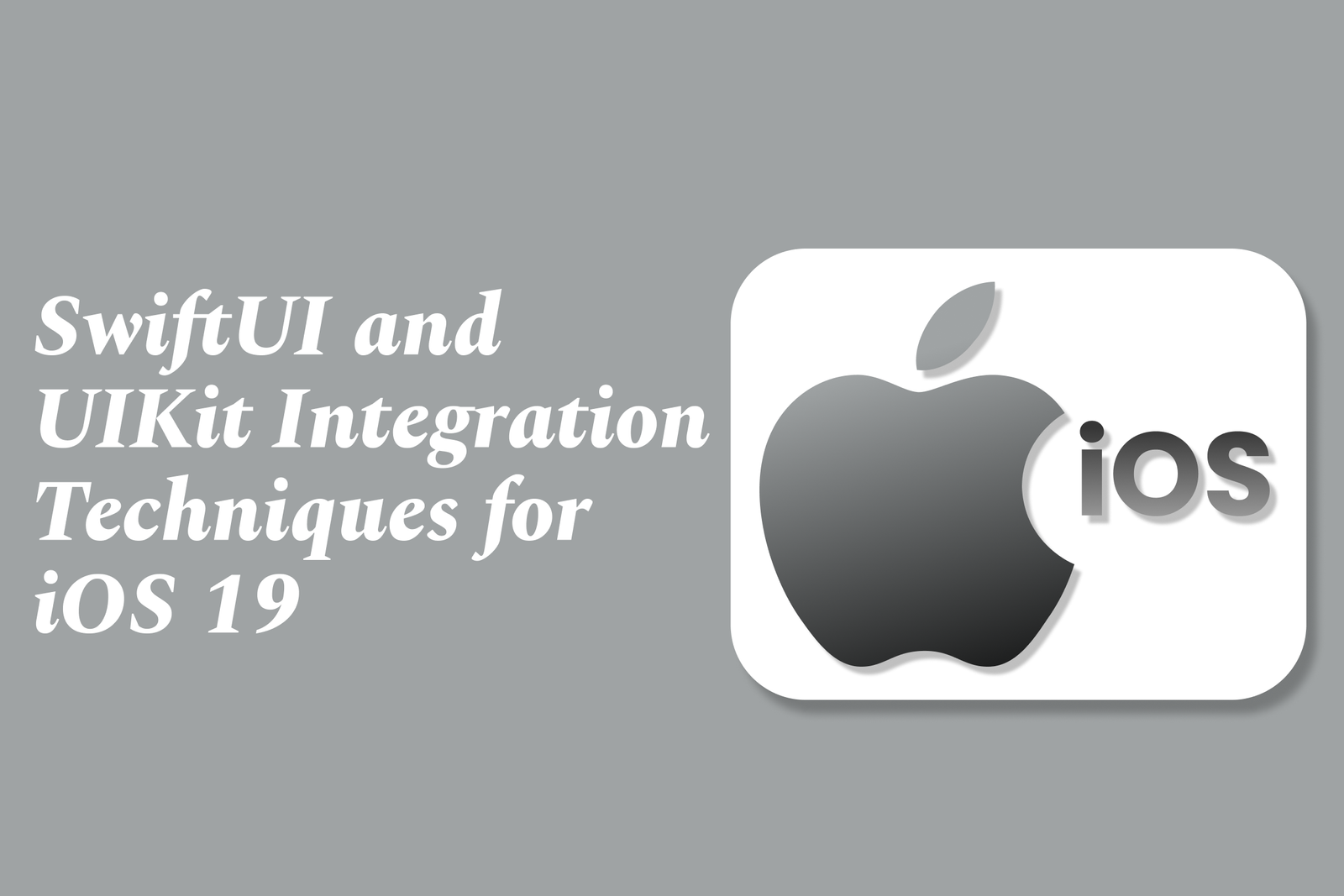SwiftUI and UIKit Integration Techniques for iOS 19
iOS 19 enhances SwiftUI and UIKit integration by allowing seamless embedding of UIKit views in SwiftUI via UIViewRepresentable, and SwiftUI views in UIKit using UIHostingController, enabling smooth communication and shared state for flexible, modern iOS app development.
SwiftUI and UIKit Integration Techniques for iOS 19
1 ) Introduction to SwiftUI and UIKit Integration
SwiftUI provides a modern, declarative syntax for building user interfaces across Apple platforms with minimal code. Despite its power, many developers continue to use UIKit, especially for complex or legacy interfaces, making efficient integration between SwiftUI and UIKit critical. iOS 19 introduces improved techniques to seamlessly blend both frameworks, allowing gradual adoption and harmony in app development.
2 ) Declarative Syntax and SwiftUI Essentials
SwiftUI emphasizes declaring what the UI should display rather than how, simplifying code readability and maintenance. Complex features like animations are easy to implement with minimal lines, with the system handling runtime details such as interaction and state changes. These declarative principles apply equally to combined UIKit components wrapped inside SwiftUI views.
3 ) Using UIViewControllerRepresentable and UIViewRepresentable
A foundational approach to integration is wrapping UIKit views or view controllers within SwiftUI by conforming to `UIViewRepresentable` or `UIViewControllerRepresentable` protocols. This enables embedding existing UIKit components directly into SwiftUI layouts, providing a bridge between the two UI paradigms without complete rewrites.
4 ) Managing Communication Between SwiftUI and UIKit
To ensure seamless user experience, state and data flow between SwiftUI and UIKit parts must be synchronized. Techniques include using SwiftUI’s `@Binding` properties to communicate state changes, leveraging coordinators for delegating UIKit events back to SwiftUI, and updating UIKit components reactively in response to SwiftUI state updates.
5 ) Hosting SwiftUI Views Inside UIKit
The inverse scenario involves embedding SwiftUI views within UIKit interfaces using `UIHostingController`. This is valuable for incrementally introducing SwiftUI features into existing UIKit based apps. Developers can treat SwiftUI views as standard view controllers, managing them with familiar UIKit navigation and lifecycle methods.
6 ) Performance Considerations and Best Practices
iOS 19 enhancements improve the efficiency of rendering and updating integrated views. Developers are encouraged to minimize view hierarchy complexity, reuse hosting controllers, and avoid heavy computations within view update cycles. Proper thread management and avoiding UI updates off the main thread also help maintain smooth animations and responsiveness.
7 ) Handling Dark Mode and Appearance
SwiftUI and UIKit integration also involves consistent app theming. Developers can manage dark and light mode preferences by synchronizing SwiftUI’s environment values with UIKit’s trait collections. This ensures a uniform color scheme and appearance across both frameworks, improving user experience.
8 ) Real World Examples and Tutorials
Apple's updated documentation and developer resources include practical examples showcasing UIKit views wrapped in SwiftUI, custom SwiftUI controls embedded in UIKit, and managing navigation flows across both. These examples help developers understand and implement the integration techniques effectively in their projects.
9 ) Conclusion
iOS 19 offers refined tools and methodologies for SwiftUI and UIKit integration, enabling developers to leverage the strengths of both frameworks. By adopting these techniques, apps can enjoy modern declarative UI features while preserving existing UIKit investments, resulting in flexible, maintainable, and feature rich iOS applications.
https://justacademy.in/news-detail/how-swiftdata-changes-persistent-storage-in-ios-apps
https://justacademy.in/news-detail/react-native-developer-salaries-see-20%-hike-in-2025
https://justacademy.in/news-detail/react-native-0.75-release:-game-changing-features-you-can?t-miss
https://justacademy.in/news-detail/remote-flutter-jobs-in-india-2025
https://justacademy.in/news-detail/apple-developer-program:-2025-changes-explained
Related Posts
In 2025, top Angular libraries offer modern, feature-rich components and tools for building dynamic web apps. From powerful data grids to low-code platforms like UI Bakery, these libraries enhance development speed, UI design, and scalability, making them essential for Angular developers.
Migrating from AngularJS to Angular 17 involves gradually upgrading your app by running both frameworks together using tools like ngUpgrade, rewriting components in TypeScript, and adopting Angular’s modern architecture to enhance performance, maintainability, and long-term support.
Angular state management tools help organize and handle app data efficiently, improving scalability and maintainability. Popular options include NgRx for robust, RxJS-based patterns, and newer Signal Store solutions that offer simpler, reactive approaches integrated tightly with Angular’s latest features.
RxJS in Angular empowers developers to manage asynchronous data streams with powerful operators like `forkJoin`, `combineLatest`, and `zip`. Mastering these key operators in 2025 is essential for building efficient, reactive applications that handle complex event sequences seamlessly.
Angular performance optimization in 2025 focuses on improving app speed and responsiveness by using techniques like OnPush change detection, lazy loading, efficient data caching, and AOT compilation. These practices reduce load times, enhance user experience, and ensure scalable, fast Angular applications.
In 2025, Angular remains preferred for large-scale, enterprise apps with its robust, all-in-one framework, while Vue attracts developers seeking simplicity and fast development for smaller projects. Both frameworks excel, with choice driven by project needs and team expertise.
Angular Signals are a new reactive primitive in Angular 16 that enable fine-grained, efficient change detection by automatically tracking dependencies and updating only affected parts of the UI. They simplify state management and boost app performance, revolutionizing Angular's reactivity model.
Angular interview questions to prepare in 2025 focus on core concepts like components, directives, data binding, routing, and dependency injection, along with TypeScript mastery and latest Angular features to ensure strong practical knowledge for building scalable, efficient web applications.
AngularJS reached its official end of support in January 2022, meaning no further updates or security patches. To ensure app security and performance, developers should consider migrating to modern Angular versions or seek third-party long-term support options if immediate migration isn’t possible.
The Angular Roadmap 2025 highlights upcoming features focused on improving developer experience and performance, including zoneless Angular, Signals integration, enhanced Forms, async data handling, improved HMR, and expanded Angular Material/CDK enhancements, driving modern, efficient web app development.










